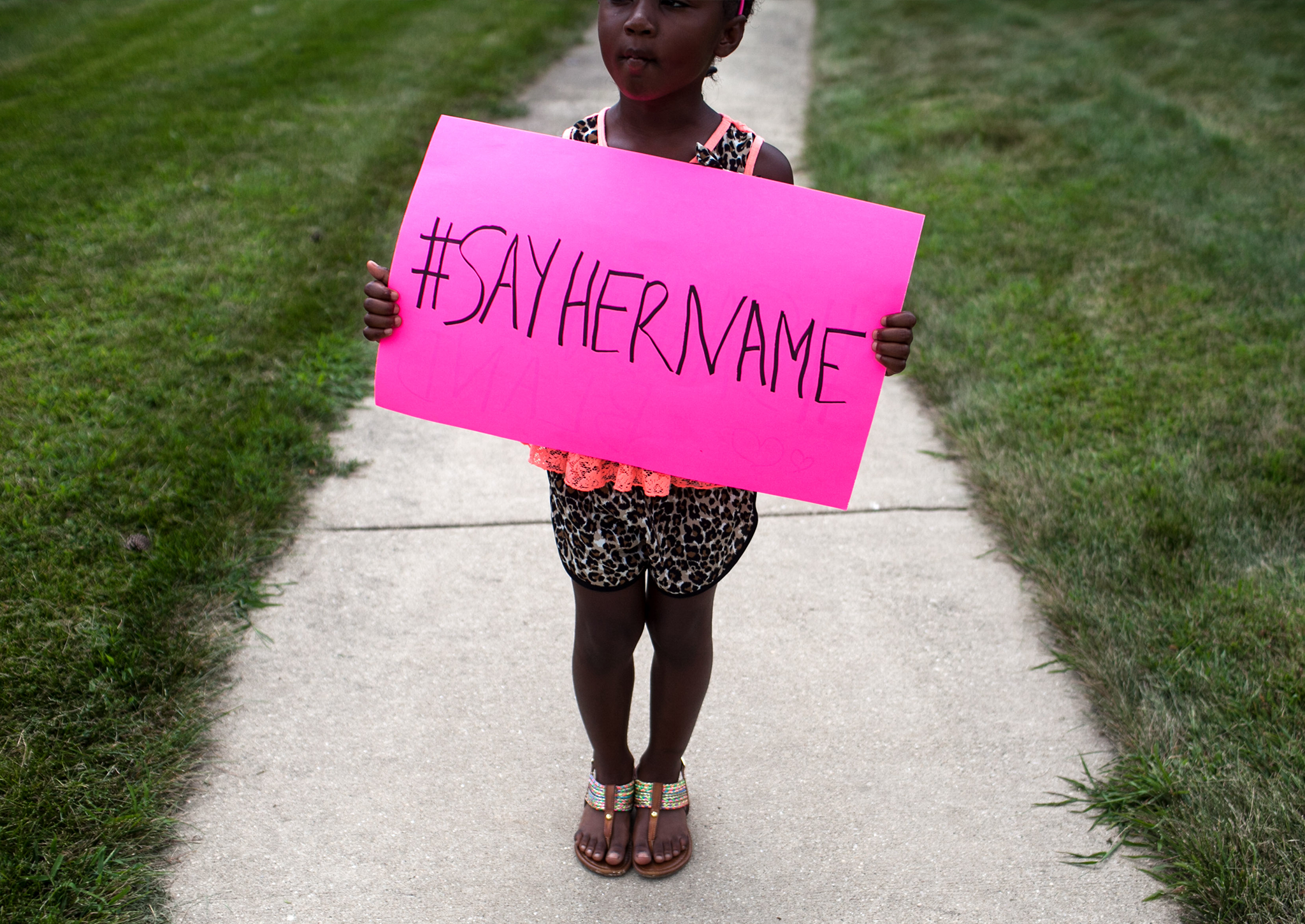Sandra Bland: The 5 questions that we should still be asking about her death
Even if the official narrative is completely true, those who were involved in Bland's arrest have a lot to explain

Sandra Bland was laid to rest over the weekend. Her death, at the age of 28, has sparked an intense debate in America about the nature of civil liberties, police professionalism and courtesy, and the role that race and gender played in the affair. It should not be lost on any of us that Sandra Bland was in Texas because she was starting a new life. Or that she left a voicemail on her friends phone during her time in custody, in which she asked "how did switching lanes with no signal turn into all of this?"
Prosecutors have now said that the preliminary autopsy results show that her death was caused by hanging and that all the evidence is that this was suicide, saying the autopsy did not reveal any injuries consistent with a violent struggle. But even if we are now closer to a final explanation of what really happened in Waller County, TX, Jail Cell #95 , there are five pertinent questions that must be asked.
1) Why did the policeman escalate a routine traffic stop in the way that he did?
The behaviour of State Trooper Brian T. Encinia, the man who pulled Bland over because she failed to use her vehicle’s turning signal, is now under increased scrutiny since camera footage of their encounter was released. "You OK?" Encinia asks Bland to begin with. "I'm waiting on you, this is your job," Bland retorts. Not happy with her reply, Encinia decides to escalate the routine traffic stop further. At one point, Encinia asks: “You mind putting out your cigarette, please, if you don’t mind?” Bland, clearly fed up with the encounter, retorts: “I’m in my car, why do I have to put out my cigarette?” Encinia then demands that Bland exit her vehicle, stating that she is now under arrest.
Once out of the car, Encinia warns Bland and says “I will light you up.” Then, out of view from the camera, he physically apprehends her. “You're about to break my wrist! I've got epilepsy, motherfucker!” ” she says. “Good.” Encinia replies. Clearly what we have is a state trooper who expected deference, and a woman who knew her rights and wasn’t going to acquiesce. And Encinia's lack of professionalism should perplex us all. Bland may have been discourteous, but cops, after all, are supposed to be trained professionals. Aren't they supposed to know how to rise above such situations?
2) Why does the dashcam footage look like it was edited?
Waller County officials released dashcam footage of the Encinia and Bland encounter. Once the footage was released, Ava DuVernay, the famed director of Selma, noted the video’s continuity issues on Twitter. The issue was then reported on by the mainstream media, forcing officials to explain the obvious discrepancies. Specifically, two parts of the video have raised the ire of those who are questioning the police account. A man is shown walking into the frame and then out of the frame of the dashcam. Also, a tow-truck vehicle is shown repeatedly entering the frame. These two seemingly minor details are problematic because the audio in the video continues uninterrupted, giving the appearance that these events occurred contemporaneously. Authorities have stated the issue was not sinister, but instead were caused by a YouTube uploading error.
3) Why were there discrepancies in Bland’s suicide assessment form?
There are two suicide assessments with disparate answers: Question No. 12 of the Suicide Assessment 1 asks: “Have you thought about killing yourself in the last 12 months?” The reply is: “No.” Question No. 13 asks: “Are you thinking about killing yourself today?” Again: “No.” However, question No. 14 asks: “Have you ever attempted suicide? If yes, When? Why? How?” The reply: “Yes. In 2015. Lost baby. By taking pills.”
In Suicide Assessment 2, there was another question asking if Bland had attempted suicide, to which her answer was “No”. Bland had a self-reported history of depression and PTSD, which she mentions in a video she uploaded to Facebook. That seemingly adds weight to the suicide theory, but the inaccuracies in the paperwork are still perplexing. This could be a minor mishap, or the work of someone not paying close attention to the forms. Discrepancies like this, however, coupled with the previous dashcam release error, only contribute to the to speculation around Bland’s death.
4) Why was Sandra Bland placed in a jail cell alone if authorities knew she was suicidal?
Let’s assume that the suicide assessment forms are accurate and Sandra had attempted suicide earlier this year. The officials had this information, so why did they place a woman with this history in a jail cell by herself? Alexandra Pyle – a woman who was in custody for unpaid parking tickets – was in the cell across from Bland’s cell. But Pyle had two women in her cell. Waller County officials have yet to answer why Bland was alone and why there were items in her cell that could have aided her in her apparent suicide effort.
5) Why was the first autopsy defective?
During a TV interview earlier last week, Cannon Lambert, the attorney representing the Bland family, revealed that an Assistant District Attorney texted him to notify the family that the first autopsy was “defective”. A defective autopsy obviously raises concerns about the legitimacy of the investigation and the final outcome. Confusion quickly ensured. What was exactly “defective” about the first autopsy? Furthermore, Waller County officials used the “defective” autopsy during a press conference the day after sending Lambert the text message. During the press conference, officials confirmed that Bland had committed suicide by hanging and focused on the THC levels in her system. This is not the first case in which autopsy information that paints the victim in a poor light is given to the media. For example, focusing on toxicology results that show the victim had traces of marijuana was also publicised in the deaths of Trayvon Martin and Mike Brown.
Sandra Bland’s death is a reminder that routine encounters between police officers and black Americans have often times been fraught with tension, violence, and unexplained tragedy. Even if we all agree that Bland’s official cause of death is accurate, that does not absolve Encinia from his actions during the routine traffic stop, or Waller County Jail staff from placing a woman with suicidal tendencies in a cell alone for three days. The system failed Sandra Bland.



Join our commenting forum
Join thought-provoking conversations, follow other Independent readers and see their replies